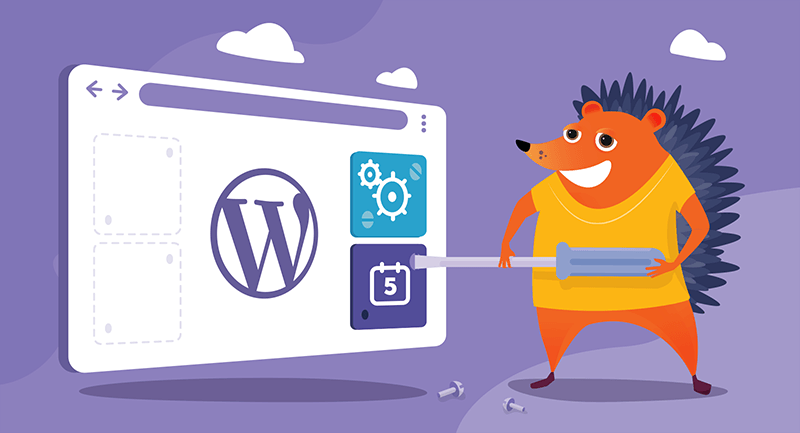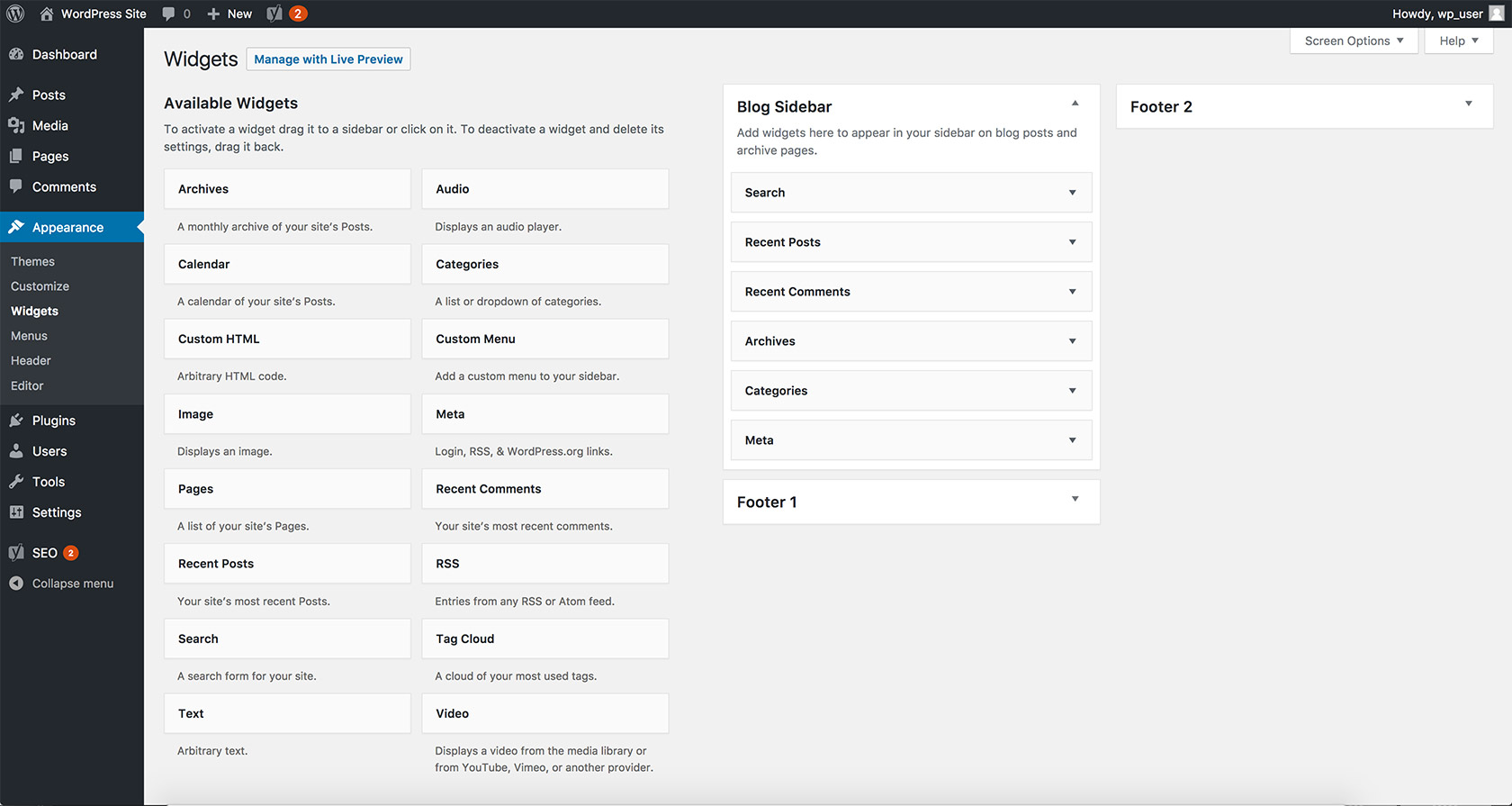How To Add Widgets To Wordpress Blog
What is a widget in WordPress?
Widgets are small movable blocks of code that can be placed on any page of your WordPress site to add content and extra features to engage site visitors. Widgets are one of the best features of WordPress since they are one of the easiest ways to add functional elements to your site without any code experience or expertise.
This post covers the role of a widget in WordPress, how it differs from a plugin and the types of widgets you need to help your site look and work better. Being aware of Widgets is necessary as they play an important role in designing your website's layout and displaying content other than the main article. Following this tutorial, you will have the gained the skill toadd and use widgets on any WordPress-based website.
Widgets are a must for any WordPress user since they give you an easy way to control the design and structure of your site while providing a straightforward way to add things to your footer or sidebar. They enable users of any level to add advanced features to their pages without having to customize them individually. These widgets are all compatible with EasyWP, our hosting service optimized for WordPress.
You can easily manage your widgets' locations, and add them to the sidebars and footers permitted in your WordPress theme in any order you want. Widget-ready WordPress Themes include the header, footer, and elsewhere in the WordPress design and structure. You may install extra widgets to plugins and themes, and there are many different types available.
Widgets vs Plugins vs Blocks
There is often some confusion among WordPress beginners about the difference between Widgets vs. Plugins vs. Blocks. They have similarities: all are used to customize your website, and all are installed using the WordPress Dashboard.
Gutenberg Blocks were introduced with the arrival of WordPress 5.0. Gutenberg blocks allow you to insert content into pages and posts, then edit them individually as needed. Plugins are pieces of software you can use on your WordPress site. Use them to add a functionality to a website that's not featured in the standard installation of WordPress. Plugins come bundled with widgets and can be found in the WordPress Plugin Directory. Widgets simply provide a way to arrange your sidebar content without having to alter your website code.
Widgets simply provide a way to arrange your content without having to alter your website code.

Managing widgets
The beauty of widgets lies in the simplicity of the widget user interface. A widget can be added anywhere on your page by simply dragging and dropping them in the order you want.
By default, WordPress comes with many useful widgets. To review them log in to your admin area and navigate to Appearance > Widgets. This page contains Available Widgets on the left side.
To begin using widgets, the first thing you need to do is activate a widget on your website; we recommend understanding the sections on the Widgets page beforehand, displayed as follows:
- The Available Widgets section displays the widgets your theme supports. These widgets haven't been added to your site yet, but they are available to use. Below the name of each widget, there is a brief description of the content it displays. Click on a widget to display the sidebars you may add this widget to and drag them to the widget-area to use them.
- The Widget area is a list of widgets currently displayed on your website.
- The right of the page displays the designated areas on your WordPress site where you can place these widgets.
- Click on Inactive widgets in the bottom right-hand corner of the page. This section holds widgets you've removed from your sidebar sections but preserves the settings you chose should you decide to use them again. If you changed themes and appear to be missing some widgets, open the Inactive Widgets area to find the missing widgets along with their saved settings.
- You primary sidebar is the main sidebar that appears on the left part of your website template. Click the sidebar to reveal the widgets already added to this sidebar in your admin area. The most straightforward way to understand how widgets work is to match the widgets displayed on your website's sidebar and those added to the same sidebar in your admin area.
- The content sidebar tab displays an additional sidebar located on the right part or directly next to content displayed on your pages. This is empty by default. You may add diverse widgets,such as Calendars, here to display them on your pages.
- Now select the Footer Widget Area. This section is for widgets appearing in the footer section of your site. Again, this area will be empty by default. You can add functionality such as Archives and Meta widgets to it, which will appear in your website footer.
Widget Areas in WordPress
Familiarize yourself with the widget areas in your theme and optimize your widgets sidebars to better suit your site's needs. You can make custom sidebar configurations using plugins. Custom Sidebars, for instance, is a flexible widget area manager which manages and replaces sidebars and other widget areas on your site. It lets you dynamically display custom widget configurations on any page or post. There is plenty of room for customization, you may even create a floating sidebar widget with this tutorial.
How to add a Widget in WordPress

Now that you can manage the widgets on your website, let's move on to the types of widgets your site will benefit from.
Essential WordPress widgets
Once you understand what widgets are, you will likely need more of them for your site. As we mentioned earlier, WordPress doesn't come preloaded with many choices of widgets. The good news is there are plenty of free and premium WordPress widgets using plugins. The options may be overwhelming to newbies. For this reason, we've compiled a list of core widgets useful for all WordPress sites.
Best WordPress Widgets
Now that we've covered the basics, you might want to enhance your site further. What's best for your website depends on your needs and requirements. No matter what your website niche is, there is most likely a widget to support you. Our "best of" list covers a broad spectrum of plugins. The one thing they all have in common is usefulness and simplicity, and should improve your site with all the UX design and aesthetics needed in a modern website.
- YouTube Channel Gallery allows you to display videos from your Youtube channel in a user-friendly grid layout, maximizing space. You can even live stream, add playlists, a browse feature and much more besides.
- The WordPress Ad Widget is one of the easiest ways to display adverts on your WordPress site.
- Show off satisfied customers with the Testimonals widget, and place them in your footer for ultimate effect.
- There are many widgets included in WordPress lead generation plugins. If you're looking to build a list for your website or blog and boost your conversions, look no further than OptinMonster which comes with high converting subscribe forms for your site.
- Feature a page widget - This plugin adds a page as a featured page in your WordPress sidebar. You may add a page title, featured image, and excerpts to the display.
- Add credibility and warmth with an Authors widget. It displays a list of authors with a small bio and an avatar.
- If you're looking to integrate weather information into your site, look no further than weather widgets. We recommend WP-forecast for accurate weather reports from Accuweather.
- Adding a map can be helpful to navigate users to your business, or simply to display your location on your site. The Google Maps Widget is the most straightforward way to add a map to your site's sidebar. The user simply clicks on the map to open it up.
Widgets for Blogs
Sidebars are equally important on WordPress blogs. You can benefit from particular widgets aimed at enhancing your UI, SEO, and conversions.
- WordPress comes with a simple recent posts widget, displaying a list of your latest published posts. Add some interest by displaying recent posts with thumbnail images with this namesake plugin.
- Add a simple tag cloud widget with Cool Tag Cloud. It looks at your tags and displays them in a widget. Each tag links to the tag page, which helps with SEO. What's more, it keeps track of your most prevalent labels, tags and classes on your blog, and lets you display them on relevant pages.
- Use widgets to display your blog's pages in your sidebar to make it easier for your readers to navigate through your blog and improve your SEO. The WordPress default widget takes care of this with finesse and comes preinstalled. You might also want to display your site's most popular posts in a light widget, such as WordPress Popular Posts.
- WordPress includes an archive widget which is great for new blogs but once you're established, you might want something a bit more advanced. We recommend Compact Archives. It displays an archive of your blog posts in a compact monthly calendar instead of the more common list format.
How To Add Widgets To Wordpress Blog
Source: https://www.namecheap.com/wordpress/wordpress-widgets/
Posted by: carterawye2001.blogspot.com

0 Response to "How To Add Widgets To Wordpress Blog"
Post a Comment